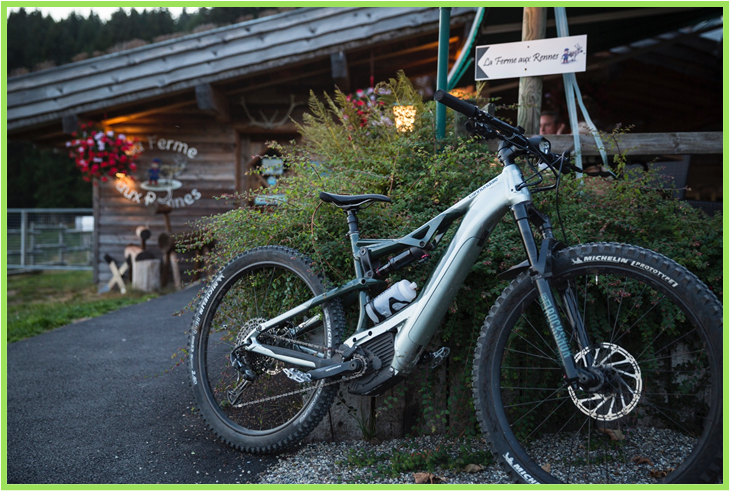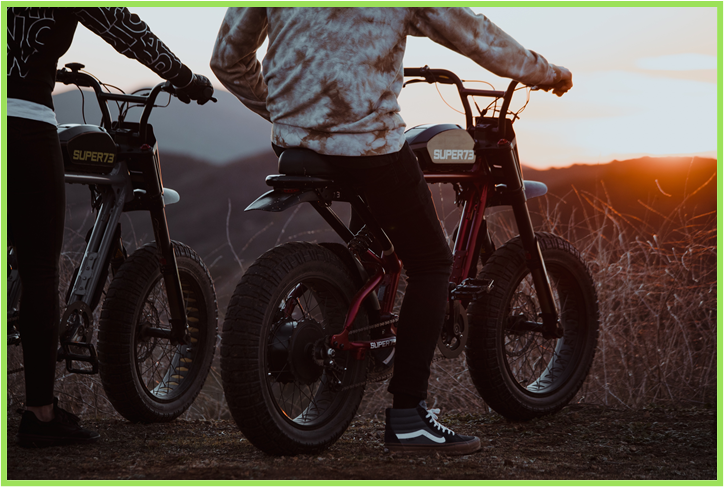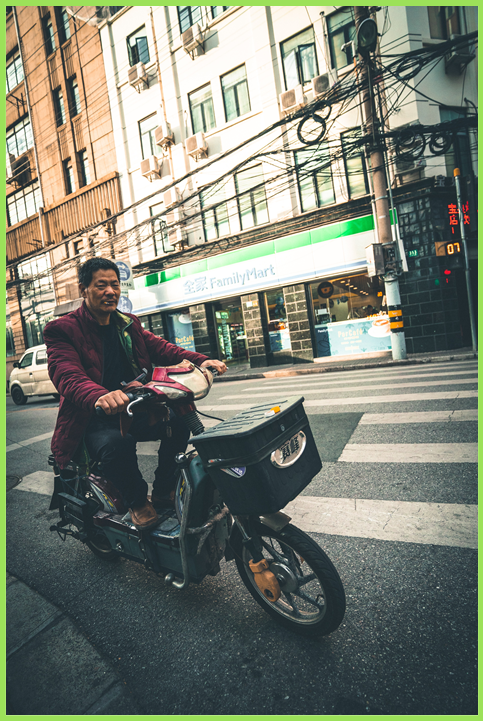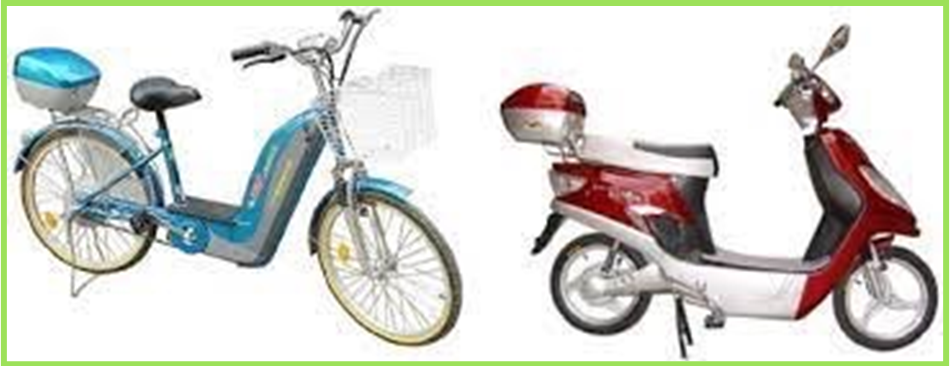Before we start talking about this subject, we need to clarify certain aspects to define the term e-bike or electric bike and its categories. The term E-bike has definitely been used on a large scale and has created a generic term whose true definition we no longer perceive. In dividing this vast subject into two articles, we will detail in the first part its full characterization in Europe (and Switzerland), we will explain its positioning on the North American market and of course, analyze the monstrous e-bike market in the Asia-Pacific regions, especially in China. Interesting enough is that there are many types of E-bikes categorized on the planet with huge variations in its legislation differing each in these parts of the globe. E-bikes are basically bikes with an electric motor (either a hub-motor or a mid-drive motor) powered by a battery that assists pedaling actions. In terms only. In the definitions we give it, we discovered that it is not this simple. In fact, the generic term E-bike hides variants all over the world, either in the power of the motor adopted, or in the modes of assistance that it produces, or even in its use affecting its look. This diversity can be influenced by stronger historical contexts of the sport of cycling in certain countries, the rational economic choices of its users, or even by the laws and federal regulations issued for them. The boom E-bike festival differs in production quantity, types of e-bikes developed, maximum speed limitation, and motor power specification. In part 2, we will develop certain questions that are worth the answer to aim to a better understanding of its market and its evolution.
In Europe, to be legally called a bike, an e-bike is equipped with an electric motor (integrated or added on the bike) that assists the rider only when pedaling. Its motor cannot exceed the maximum power output of 250 watts allowing you to climb up your speed to 25 km/h. Beyond that speed, the motor of most bikes stops providing electric assistance. The same effect occurs when you stop pedaling. However, as you pedal harder, the assistance provided by the motor increases till you reach the speed limit pointed before. Some e-bikes may have different pedal-assist modes for different practices or terrains. They can be named Electric Assisted Pedal Cycles (EAPC), Pedelecs (Pedelec 25), or e-bikes 25. They have no other specific regulatory codes than normal bikes, allowing you to use them everywhere standard bikes are permitted. In Swiss regulations, riders must be a least 14 years old and have a type M driving license (14-16 years old), no longer required after 16. This is the type we are most familiar with.
Europe (and Switzerland)
The second type, as seen in the European legislation, is categorized as electric vehicles, the same as mopeds or motorcycles, with the only difference being their ability to reach a maximum top speed of 45km/h. Also assisted by pedaling and powered by a motor with maximum continuous power up to 4,000 watts (although very rare, the average is 500 watts), they are frequently called S-Pedelecs (Pedelecs 45) or E-bikes 45 and require different stipulations such as minimum age (16 years old), driver’s license (AM), insurance, registration and helmet (different measure in some countries of the EU)) for the most common certifications. The use of bicycle paths, a trailer, or a child seat is not permitted with these vehicles. In Switzerland, a maximum of 1,000 watts is allowed to power your S-Pedelec and baby seats (up to 17 kg or 7 years old) or trailers (max 2 children) are authorized. Riders must have reached the age of 14 with a type M driving license (14-16 years old), no longer required after 16.

The last category of E-bike is the one where the control of the engine is done with a throttle, often located on the handlebars, allowing to control its speed, replacing the function of assistance to the pedaling of the two previous categories. They can reach speeds of over 50 km/h and are considered motorcycles under European legislation. In other words, they are clearly and fundamentally not considered bicycles, but rather motorcycles, which implies totally different provisions in European legislation. They are also subject to other obligations (which differ from country to country) such as registration, helmet use, and insurance in addition to the specific legal obligations related to its attachment to the motorcycle categories. This variety of E-bike remains quite marginal for the moment in Europe but could see its market change in a few years. We will see that in the second part of this topic.
North American (US)

In the United States of America, there is confusion and frustration about defining electric bikes. Whether it’s the variety of e-bike (watts, speed, coding), the inexistence of regulation in different Provinces, states, or municipalities (grouping them by default with motorcycle), and the disorganization between certain federal agencies in charge of declaring them, it creates chaos, resulting in identifying them differently depending on where you live. It is also a nightmare for manufacturers, dealers, and even law enforcement, who are in the frontline with those misunderstandings.
In 2002, the US congress defined E-bike, in order to assimilate it to the same rights as a bicycle, as follow:
« A two or three-wheeled vehicle with fully operable pedals and an electric motor of fewer than 750 watts, whose maximum speed on a paved level surface, when powered solely by such a motor while ridden by an operator who weighs 170 pounds, is less than 20mph (32 km/h) ». »For the purpose of motor vehicle safety standards, an electric bicycle at this speed as defined above shall not to considered a motor vehicle ».
Imagine that! Good luck describing what « fully operable pedals » means since some motor vehicles (scooters or mopeds) are known to have them, indeed with low efficiency, to propel the device. Nevertheless, it is still possible to pedal even over a significant distance.
To « improve » clarification of federal regulation of E-bikes, knowing that the 10th amendment poses the principle of general jurisdiction of the federal states, each of them can assign a new rule. Out of the 50 states (+DC), 44 impose a speed limit on E-bike; 22 of these 44 states have a speed limit of 20 mph (32 km/h), 6 states have a speed limit of 25 mph (40 km/h) and 16 states of 30 mph (48 km/h). And this continues, at the same level, for differences in engine output, minimum age of users, driver’s license requirement (or not) or vehicle registration. In some urbanized areas, the lack of a proper definition has caused problems ,whereby certain E-bikes are, or are not, prohibited from standards bike paths or sidewalks, nor able to be registered by State, thus making them illegal. Amidst these differences, the analysis of the law and regulation of E-bike in the North American continent shows more confusion and perplexity in their reading.

Indeed, two terms then represent the field of E-Bikes: Bicycle style electric Bikes (BSEB) and Scooter Style electric Bikes (SSEB).
As the SSEB is not highly represented on the other side of the Atlantic, we leave it aside. Good!
In this confusing problem, we distinguish two categories in the BSEB; the power bicycle (PB) and the Power-assisted bicycle (PAB). A few E-bikes can operate as both PB and PAB.
They are classified into 3 classes.
Class 1: E-bikes with limited motor’s power to 750 w, pedal-assisted only, with a maximum assisted speed of 20 mph (32 km/h).
Class2: E-bikes with limited motor’s power to 750 w, throttle-assisted with a maximum speed of 20 mph (32 km/h).
Class 3: E-bikes with limited motor’s power to 750 w, and pedal-assisted only, with no throttle, and a maximum speed of 28 mph (45 km/h).
If you’re sweating and that your head starts spinning, it’s normal.
If you were willing to move to the States and ride your E-bike, we advise you to get in contact with the local authority in order to guarantee that your E-bike sets regional regulations.
ASIA (China)
The first, biggest, and quickest growth of E-bike in the world occurred in China. Rapid demands were on rise evolving from various factors.
From the origins of mass production in early 1990 (unappealing for a variety of reasons)) to the present day, diverse elements have led the Chinese to adopt E-bikes as a means of transport. Without much of a cycling sports background, China has used human-powered bikes since the invention of bicycles, but only for transportation. With urbanization, the population of cities has rapidly expanded, resulting in car traffic congestion, a saturation of public transportation, and increased air pollution. Faced with these problems, at the beginning of the 21 st century, and with the emergence of radical new technologies (high motor and batterie efficiency), E-bikes proved to be an economical solution for people, as they could now travel longer distances, recharge their batteries easily at low cost.

The market has boomed when some cities started to ban gasoline-powered scooters, thus favoriting the progress of E-bikes. However, unlike in Europe or the States, SSEBs ( Scooter Style Electric Bike) were preferred to BSEB (Bicycle Style Electric Bike) because of their capacity of cargo, the number of passengers on board (the whole family!), their comfortable seat (larger) and their style. They were also used to the same machine powered with a gasoline motor.

Before that and in addition to these inclinations, the Road Transportation Safety Law of China ratified in 2004 a classification of the E-bike, as a non-motorized vehicle, if some of the following specifications were met: a maximum speed of 20 km/h, a certain brake distance limit, a frame vibration standard and functional pedals!
For this last specification, manufacturers jumped on the opportunity, providing « functional » pedals and a speed restriction device (easily removable) on SSEBs, making them even more attractive to the public. SSEBs’ sales hit the fan.
From these national regulations, local authorities were demanded to manage how to enforce those standards. Cities adopted different attitudes depending on their own urban problems, location, or policies, thus affecting, or not, the expansion of electric bikes. Cities in the north, exposed to lower temperatures, have stuck with human power bicycles because the efficiency of E-bike batteries weakens in cold weather. In the south, in Shanghai (pop. 26 million) where the climate is milder, E-bikes were popular (70% of E-bikes are SSEB).
Today, Chinese manufacturers are divided between producing SSEB for the Chinese market, where competition is very strong, or promoting a more European style of E-bikes (mountain bikes, enduro bike, road bike, city/urban bike). For this last, they are facing a strong opponent, with long-established brands that have been feeding us for decades on their performance and results. Marketing and tradition are difficult to overcome when they are so deeply rooted in people’s minds. It is more like a brand developing concept where the breakthrough is tougher to achieve.
Don’t worry though, the Chinese manufacture a large number of bicycle or E-bike parts for most of these famous brands.
We are proud to say that the EU regulations for E-Bike are mostly clearer than anywhere else in the world. We see that E-bikes are booming all over the world. There is no doubt.
We also learn that they are valued differently in these 3 regions of the world. Each of these 3 regions has different types, engine powers, maximum speeds, and utilities. Each of these 3 regions supports distinctive laws and regulations, when there are any. Now we understand why the term E-bike has been widely used. But of the 3, which E-bike segment will thrive most in the future? Will the history of European cycling sport still cultivate the same vision of the current E-bike concept? For which users and utilities will it be designed? What other developments in technology can expand its service? On the other hand, what restrictions may hinder their expansion? Are you curious to know?
See you in part 2!
